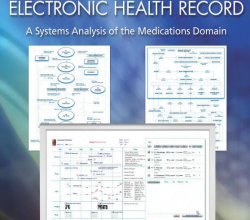Why is healthcare so expensive in the United States? Everyone has a go-to reason, but if you look at the inner workings of any hospital, it quickly becomes evident that waste is a big player in high medical bills – and some departments are guilty of more waste than others. In fact, this reasoning extends to all medical practices, including traditional primary care offices and even nursing homes. What’s the reason for all of this waste?
In many cases, waste is a result of two key factors. First, waste is an attempt to prevent infection. By simply getting rid of everything that has even been near a prior patient, even if unused, doctors assume they lower the risk of infection or error. The second reason is protocol. It’s become standard to set-up operating or procedure rooms with specific tools – doctors have documents similar to celebrity riders that lay out their preferences – and no one can question these protocols. It’s just not done.
Still, as healthcare continues to dominate the airwaves, cost has also become a hot-button issue and hospitals are sitting up and paying attention. In response to public outrage and investigations into wasteful healthcare practices, hospitals are turning to assessment software in hopes of cutting the fat.
Parsing The Budget
Logic says that if you want to cut costs, look for where the greatest budget overruns are because this is where there’s leverage, but in order to do this, hospitals need to parse expenses down to the finest details. That’s where assessment technology comes in.
Some hospital expenses are subject to minimal tracking, at least at the enterprise level. This is particularly true of purchased services, which may include third-party transcription, waste disposal, staffing, and even clinical services such as dialysis. In fact, according to HealthTrust, purchased services may amount to as much as 30% of hospital spending. Without tracking these purchases, however, hospitals can’t consolidate and negotiate for lower costs or identify when internal execution would be more cost-effective.
Project portfolio management (PPM) software can help bridge the gap between purchased services costs and available funds. For example, the PPM Meisterplan tracks overall finances as well as individual project expenditures. For further efficiency, it can reassign workers based on skills to complete tasks in a more efficient, expert, and cost-effective manner, making it a triple-win.
The Power Of Prediction
When asked about waste, doctors often justify acts of excess with a simple excuse – “you just never know.” In other words, tools are opened and set out and never used because of the tiny possibility those implements could be needed. Patients tell tales of being charged for hospital personnel they never met, and when they complain they are met with the explanation, “well they had to be present just in case.” While hospitals should be prepared for serious eventualities, there must be a way to do so with less waste.
In fact, there is a way to embrace preparation and limit excess; it’s called predictive analytics. Predictive analytics software can identify thousands of risk factors within a hospital, including surgical complications and medical interactions, as well as environmental factors, and assess the likelihood of different outcomes.
One example of technology-assisted risk management can be seen in an unlikely place: the laundry room. Linen laundering is a topic of serious concern in hospitals, particularly among infection preventionists, because linens can harbor harmful bacteria and spread disease. Therefore, when choosing a linen service, hospitals need to consider not only the price per pound of laundry, but also whether the chosen linen service provides high-quality cleaning. Savings on laundry can quickly endanger the budget if substandard procedure spreads disease, but careful analysis can balance the financial and medical interests of a hospital.
Too Much Tech – Or Too Little?
Whenever hospitals discuss spending overruns, there are always people who suggest that the problem is really technology. By relying on new technology, the individuals argue, and therefore purchasing countless new machines and devices, hospitals are unnecessarily driving up costs. But is this really true?
According to research Robert Graboyes, technology itself isn’t the problem. In fact, in terms of sheer computing power, American spend far less on technology today than they did in prior decades. Rather, Graboyes says that American healthcare costs more in large part because we are wealthier than ever and have committed a greater portion of that income to medical treatment. It’s largely a question of priorities.
Returning to the example of purchased services, then, we can see how technology is a friend rather than a foe in the fight against overspending. Using improved classification technology and enterprise-wide management, consultants can be mandated to classify all charges. Historically, consultants have only categorized, on average, 80% of services, even though hospital standard is 95%. Central services can deny payment for uncategorized services or work with consultants to determine barriers to categorization based on this data.
Finally, the particularly American ethos that accepts enormous amounts of waste as normal is a major contributor to high healthcare costs. Nursing homes, for example, throw away hundreds of millions of tons of perfectly good medication each year. Hospitals toss equipment without a second thought. And despite the millions of people who can’t access adequate healthcare, these products go to the incinerator.
Why do practices do this – and what can we do to stop it? There are several options, but the most obvious choice is to make internal policy changes. Data collection and analysis can help fuel this. Many doctors don’t realize the scale of medication waste because they aren’t directly involved in tossing pill packets or staplers. But presented with a chart of all wasted materials, many could be convinced to make changes. Using simple analytics software, waste can even be broken down by department, placing doctors in competition with each other to reduce waste. The data creates a record and doctors can’t argue with the numbers.
Ideally, all hospitals should use enterprise software across all departments for tracking expenditures and other data, as this allows for centralization and internal policy reform. But hospitals should remember: this is data driving costs down – or at least it has the potential to if used properly.







